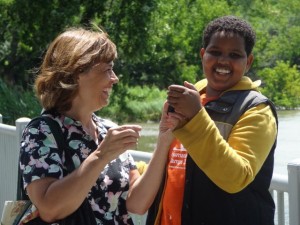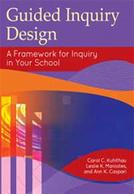 Thank you to the American Association of School Librarians (AASL) blog for putting the Building a Culture of Collaboration blog (BaCoC) in the spotlight last week. All of the BaCoC co-bloggers are card-carrying active AASL members who promote and model getting involved in our national association for school librarians. As evidenced in Melissa Johnston’s recent post about AASL’s new mission statement and leading through technology, we also promote the work of the association. This is one way to promote a national culture of collaboration.
Thank you to the American Association of School Librarians (AASL) blog for putting the Building a Culture of Collaboration blog (BaCoC) in the spotlight last week. All of the BaCoC co-bloggers are card-carrying active AASL members who promote and model getting involved in our national association for school librarians. As evidenced in Melissa Johnston’s recent post about AASL’s new mission statement and leading through technology, we also promote the work of the association. This is one way to promote a national culture of collaboration.
AASL’s new mission statement is: The American Association of School Librarians empowers leaders to transform teaching and learning.
Yes! To the importance of keeping our focus on teaching and learning! One way to do that is for school librarians to engage in collaborative planning and coteaching with classroom teachers and specialists. Since the publication of Information Power: Building Partnerships for Learning (1998), AASL has promoted the school librarian’s role as an instructional partner: “The school library media specialist can provide strong and creative leadership in building and nurturing this culture of learning, both as a teacher and as an instructional partner… As an instructional partner, the school library media specialist offers a unique expertise in learning theory, information literacy, and information technology to promote learning” (60).
AASL recently released the executive summary from the Senior/Capstone Project’s Task Force. The task force surveyed high school librarians about their involvement in students’ senior/capstone projects. The graphs provided in the summary show areas of potential growth in terms of school librarians’ involvement in guiding, teaching, and assessing these projects. The task force identified six exemplars from high schools of varying sizes and geographic locations across the U.S. to serve as models for best practices. The report includes at table with contact information and links to four of the six schools’ projects.
Check it out!
Works Cited
American Association of School Librarians (AASL). Information Power: Building Partnerships for Learning. Chicago: American Library Association, 1998. Print.
AASL Senior/Capstone Project Task Force. Executive Summary. American Association of School Librarians. May 2014. Web. 28 Jul. 2014. <http://www.ala.org/aasl/sites/ala.org.aasl/files/content/aaslissues/advocacy/AASL_ExecSummary_SeniorCapstoneProjectTF_2014.pdf>.
Peralta, Paola. Social Media Marketing. Licensed under Creative Commons Attribution-Share Alike 3.0 via Wikimedia Commons. Web. 28 Jul. 2014. <http://commons.wikimedia.org/wiki/File:Social_Media_Marketing.jpg#mediaviewer/File:Social_Media_Marketing.jpg>.


